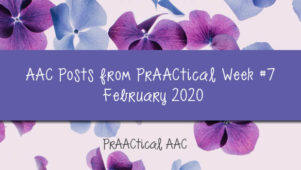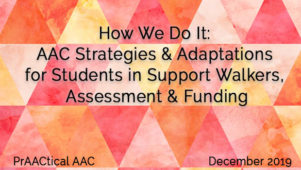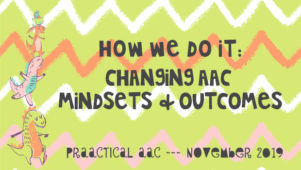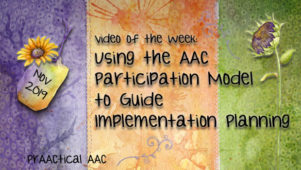HijAACked! AAC & Anti-Bullying with Stand Tall, Mary Lou Melon!
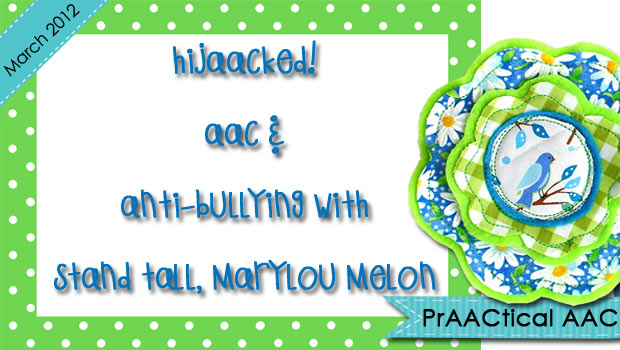
Stand Tall, Mary Lou Melon by Patty Lovell is a fun book that we like reading online* with kids who use AAC.
 Many schools have anti-bullying campaigns and read this book and others as part of their efforts to help children recognize and respond appropriately to unkind words and deeds. There are a lot of great resources for reading this book on sites like this one intended for use in general education classrooms. We decided it was time to HijAACk Mary Lou and share some ideas for using this wonderful story to build AAC and language skills.
Many schools have anti-bullying campaigns and read this book and others as part of their efforts to help children recognize and respond appropriately to unkind words and deeds. There are a lot of great resources for reading this book on sites like this one intended for use in general education classrooms. We decided it was time to HijAACk Mary Lou and share some ideas for using this wonderful story to build AAC and language skills.
–
1. Beginning communicators could certainly contribute to the ‘read aloud’ portion of the activity with repeated lines, like “So she did.” Recording that into a single message device, an SGD, or an AAC app gives our student a terrific way to be actively engaged.
2. Students who can discriminate between two options can get involved at another level. There are many pages in the story where something is said that is either nice or nasty. We could give our beginning AAC users comments appropriate for each of them. On the relevant pages they could then chime in with an appropriate positive or negative comment, such as “That’s great idea!” or “Hey, that’s not nice!”
3. Many classrooms use downloadable worksheets like this one, meaning that our AAC kids need accessible materials. In a perfect world, the worksheet would be available in the appropriate accessible format but that’s not the world that most of us live in. Activities like this provide a good opportunity to teach our kids to take control and give directions when those materials aren’t in place. While we’re huge fans of the core language approach, prestored messages can really come in handy here. “Where’s the scanned version?” “Can you please scan it for me?” “It’s in my IEP.” “Thanks for your help.” “Next time, can you please do it in advance?” It’s never too soon to teach age appropriate self advocacy skills.
4. Use a “Find and Replace” activity to help build vocabulary and/or give core word practice. When we come across expressions like ‘fumble fingered,’ we can put those into our own words using core language (e.g., hands not move good; hard time doing it; clumsy). Highlight those expressions in the book with removable highlighting tape so that when we come across the terms, students know to replace it with words of their own choosing.
5. Because this book is used in discussions about bullying, we have the chance to think about and practice how to respond to mean comments. Some well-chosen retorts (appropriate for the age and
 situation) can be selected with the student, family, and teacher, and programmed into the SGD. This will give the student an appropriate way to participate in some of the discussions and role play activities that are going on in many classrooms that focus on character building.
situation) can be selected with the student, family, and teacher, and programmed into the SGD. This will give the student an appropriate way to participate in some of the discussions and role play activities that are going on in many classrooms that focus on character building.
6. Non-literal language: This is a great book to use to talk about idioms and metaphors. What does it mean to ‘stand tall’? Do you really have to be able to stand up to do that? What other ways could we say this? “Be proud, Mary Lou Melon.” “Stay strong.” Cement the learning experience by re-reading the story with the AAC user’s alternate wording.
7. Personal narratives: Tell about a time when you saw or heard people being mean. Give an example about when someone gave you advice or suggestions.
–
Hope you have a chance to use and/or share these ideas for this HijAACked book.
–
–
*With appreciation to We Give Books, a project of the Pearson Foundation and Penguin Books (more info here).
Filed under: PrAACtical Thinking
Tagged With: bullying, HijAACked, intervention, schools
This post was written by Carole Zangari

